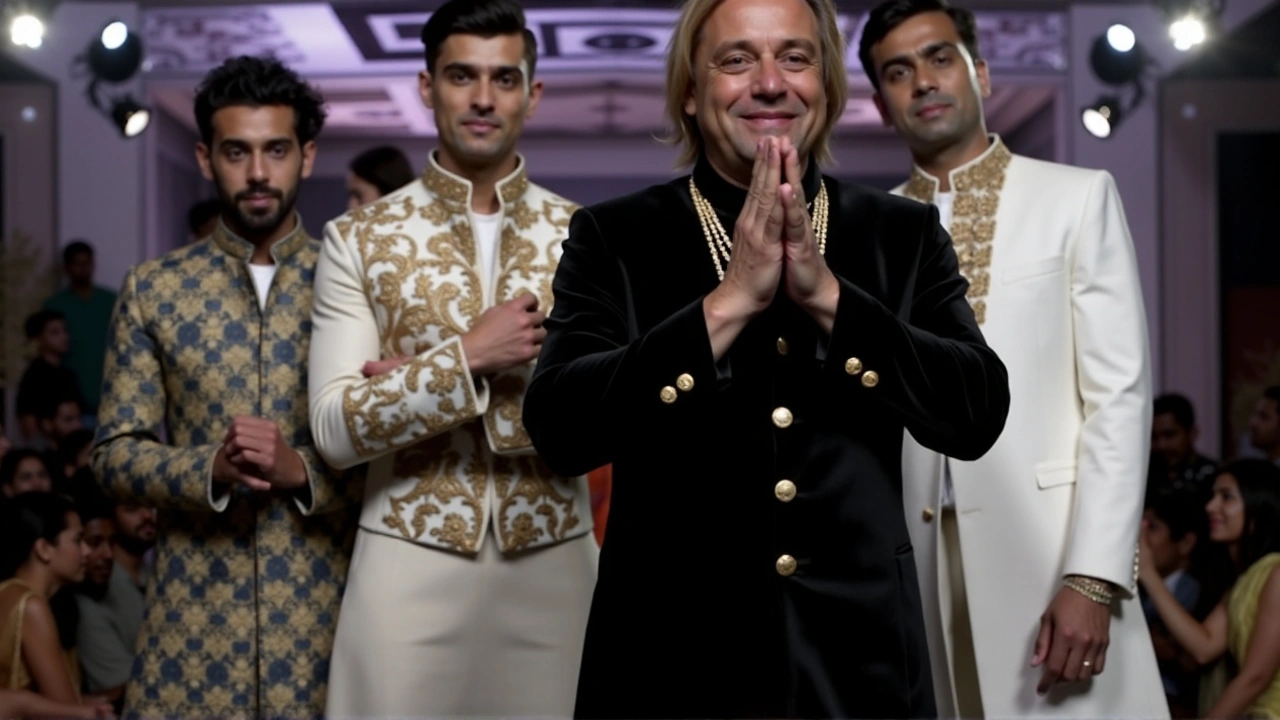
The Timeless Elegance of Rohit Bal
The world of fashion bids farewell to one of its most cherished icons, Rohit Bal, who passed away at the age of 63 on November 1, 2024. Known for his groundbreaking contributions to Indian couture, Bal's death marks the end of an era characterized by innovation, opulence, and an enduring commitment to traditional craftsmanship. Born in the picturesque surroundings of Srinagar, Kashmir, on May 8, 1961, Bal blossomed into a designer whose influence transcended borders. As a trailblazer in the fashion industry, Bal was affectionately known as 'Gudda' among his peers and fans. His journey throughout the fashion world has undoubtedly left a profound mark on the industry.
A Journey Through Indian Couture
Rohit Bal's foray into the realm of fashion was marked by an unrelenting dedication to excellence and creativity. His designs, often described as being ahead of their time, showcased a harmonious blend of traditional Indian aesthetics with a contemporary twist. The hallmark of Bal's creations was the intricate embroidery and luxurious fabrics that exuded an aura of elegance and sophistication. His keen eye for detail and understanding of fabric technology allowed him to craft garments that were not only fashion statements but works of art. The seamless integration of modernity and tradition in his designs earned him accolades and respect from the fashion industry worldwide.
Bal's approach to fashion was as much about creating striking visuals as it was about telling stories through cloth and thread. His collections often drew inspiration from India's rich cultural heritage, drawing on motifs and techniques that had been passed down through generations. By marrying these elements with contemporary styles, he succeeded in bringing a sense of timelessness to his work. It is this unique vision that cemented Bal's reputation as a pioneer in Indian fashion. From grand shows at international fashion weeks to intimate exhibitions in India, every presentation was an event in itself—a celebration of color, texture, and exquisite craftsmanship.
A Visionary Beyond Fashion
While Rohit Bal's primary identity lay in fashion, his creative prowess extended well beyond garments. His entrance into the culinary landscape is a testament to his versatility and passion for design in all its forms. With two restaurants in Delhi—Veda and Cibo—Bal curated spaces that echoed his design philosophy of blending the rustic with the sumptuous. Veda, known for its rich Mughlai and North Indian cuisine, offered diners a sensory experience that went beyond taste, while Cibo provided a lively atmosphere with a curated menu harmonizing Italian and Indian flavors. This fusion of culinary traditions mirrored the innovation Bal brought to fashion—a seamless amalgamation of tradition with modern flair.
Bal's ventures into diverse creative fields demonstrated his commitment to sustainability and integration of arts. His work with Khadi Gram Udyog highlighted his dedication to sustainable fashion—an ethos built on supporting local artisans and reducing environmental impact. By championing the cause of indigenous fabrics like khadi, he contributed significantly to the revival and international appreciation of these traditional fabrics. Such collaborations not only enhanced the industry's focus on sustainability but also set a precedent for future designers aiming to intertwine ethical practices with luxurious fashion.
Enduring Influence and Legacy
As a founding member of the Fashion Design Council of India (FDCI), Rohit Bal's influence permeated far beyond his creations. He played a crucial role in nurturing and promoting Indian design talents, encouraging a culture of creativity and innovation. Bal's mentoring of young designers fostered a new wave of designers who carried forward his ethos of blending traditional art with modern trends. His return to the runway at Lakme Fashion Week, following a brief hiatus due to a heart ailment, was a testament to his resilience and unyielding passion for fashion. This final showing encapsulated his career-long philosophy: fashion as a form of art, expression, and connection.
Among the many highlights of Bal’s contributions to fashion, his work on costumes for popular television shows like 'Kaun Banega Crorepati' showcased his versatility and ability to adapt his aesthetic vision across mediums. As styles come and go, Rohit Bal's legacy remains steadfast, continually inspiring future creatives to push boundaries and embrace diversity in their pursuits. His life, a rich tapestry of color, elegance, and innovation, serves as a beacon of inspiration for designers and enthusiasts alike.
Words fall short in encapsulating the legacy of a man whose life was spent coloring the world with beauty and creativity. As the fashion fraternity mourns the loss of Rohit Bal, we remember him not only as a designer but as an artist who gloriously upheld the fusion of tradition with modernity. In paving the path for Indian haute couture on global stages, he ensured that his art would live on, echoing in the weaves of those he inspired and in the stories told by the threads woven under his name.





